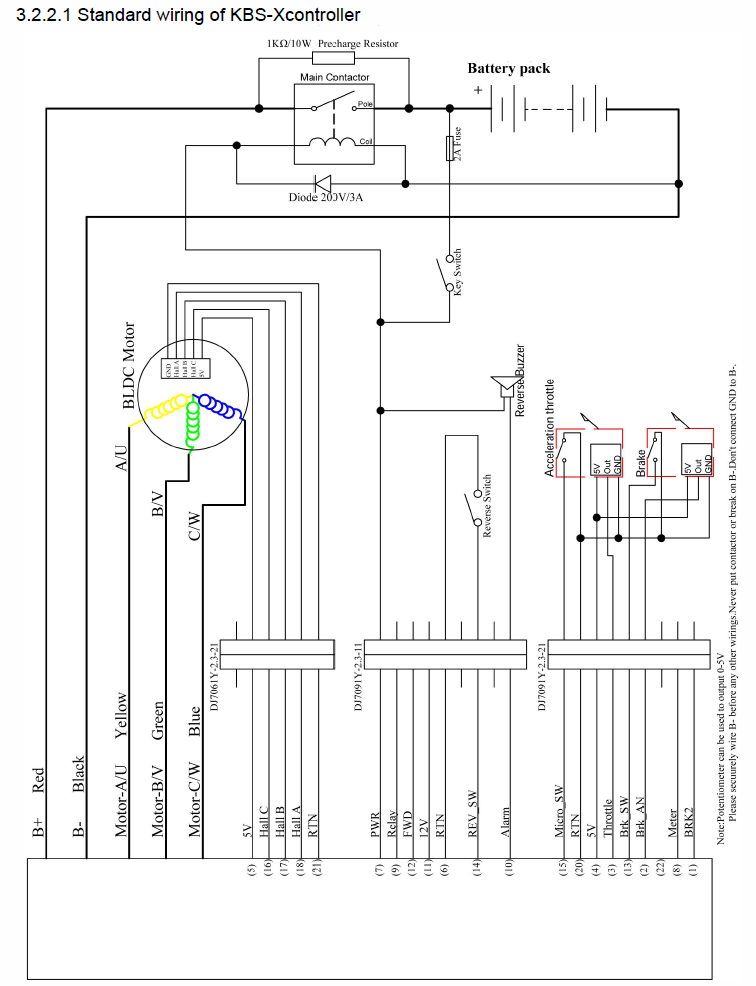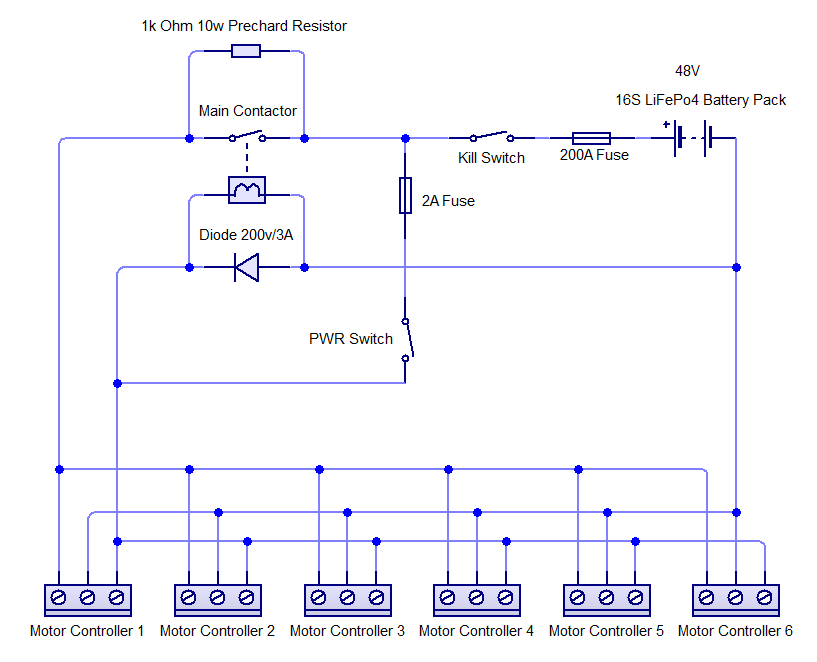Glyn
10 W
- Joined
- Oct 7, 2017
- Messages
- 70
Hi all,
I'm, building a 6-wheel-drive vehicle using brushless ebike hub motors (20T 48v 500w 5:1 Mac - 10A continuous, 15A Max).
I couldn't find a brushless controller with 6 channels, so I've bought six single motor controllers instead. The 6 controllers are Kelly KBS48101X controllers.
They'll be running off battery packs made of 16 Headway cells (56.5v fully charged)
The vehicle will be driven tank style, with one joystick going to three controllers on one side, and vice versa.
Looking at the wiring diagram in the user manual though, I have some questions.

You can see in the diagram that they recommend using a 1k Ohm 10w Precharge Resistor across the main contactor (see top of diagram).
I understand the precharge resistor is needed to fill the capacitors, otherwise the current draw is too large when you connect the battery which can weld the contactor. My first question is, do I need a contactor or can I use just a bog standard switch, and, if I just go with a switch, will it still need the precharge resistor?
I guess I'll wait for an answer to this question first but it will impact my next questions.
I'm, building a 6-wheel-drive vehicle using brushless ebike hub motors (20T 48v 500w 5:1 Mac - 10A continuous, 15A Max).
I couldn't find a brushless controller with 6 channels, so I've bought six single motor controllers instead. The 6 controllers are Kelly KBS48101X controllers.
They'll be running off battery packs made of 16 Headway cells (56.5v fully charged)
The vehicle will be driven tank style, with one joystick going to three controllers on one side, and vice versa.
Looking at the wiring diagram in the user manual though, I have some questions.

You can see in the diagram that they recommend using a 1k Ohm 10w Precharge Resistor across the main contactor (see top of diagram).
I understand the precharge resistor is needed to fill the capacitors, otherwise the current draw is too large when you connect the battery which can weld the contactor. My first question is, do I need a contactor or can I use just a bog standard switch, and, if I just go with a switch, will it still need the precharge resistor?
I guess I'll wait for an answer to this question first but it will impact my next questions.



